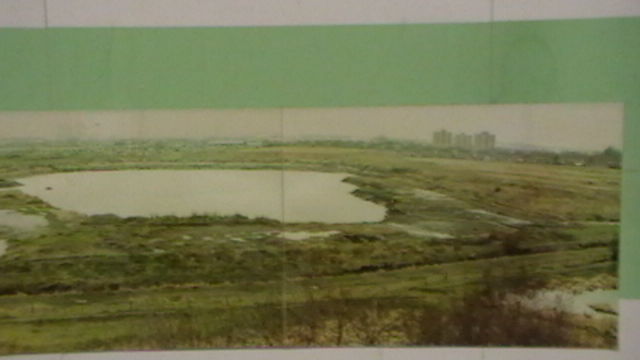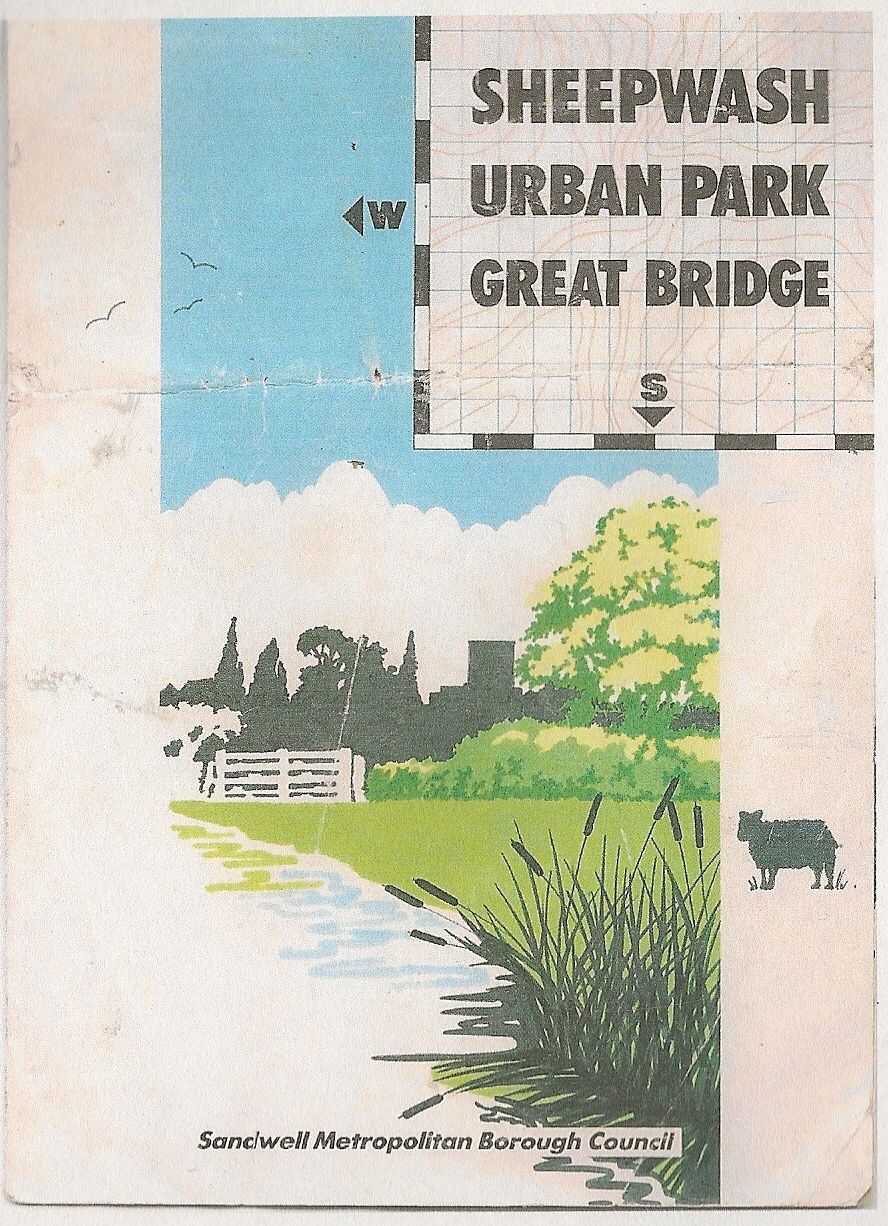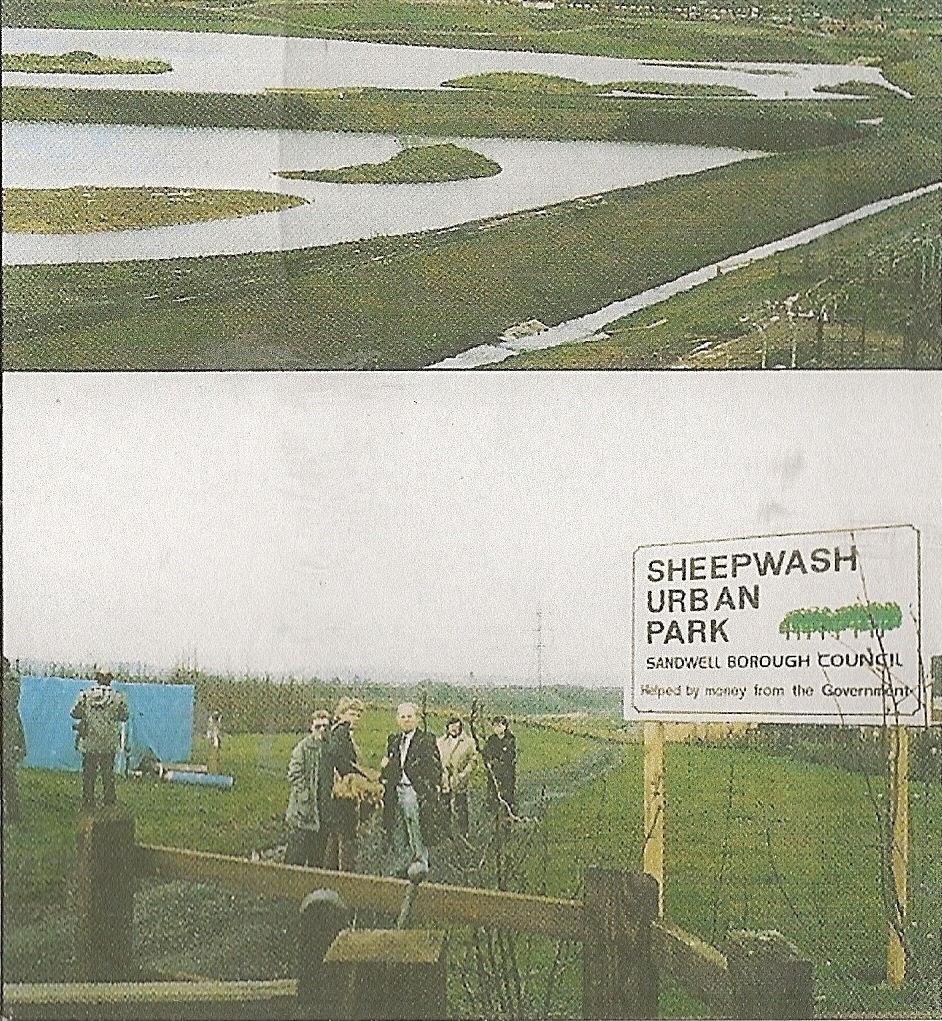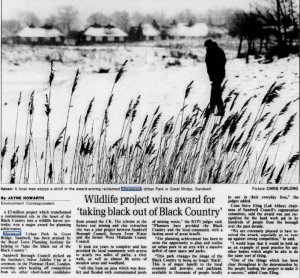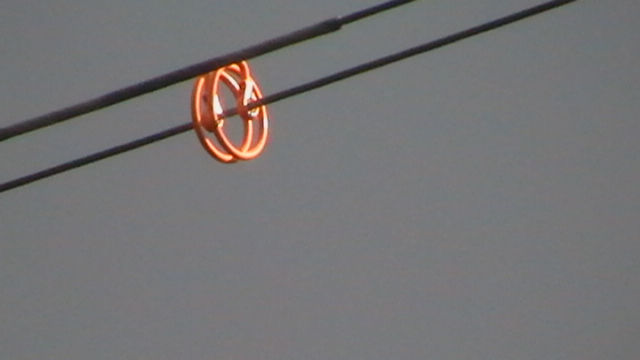HISTORY
Originally in the 18th Century, the land now occupying Sheepwash and the surrounding Newtown estate was used for grazing and the name “sheepwash” indicates that sheep may have been washed here. The site also includes the site of a 17th Century corn Mill known as “Dunkirk Mill”.
For many centuries the land has been exploited for mineral deposits. Numerous coal shafts were sunk on the site and the current pumphouse pool, like the nearby Rattlechain brickworks was once a claypit serving The Pump House brickworks.
The Newtown estate was largely built upon one of several gravel pits. Two canal arms were constructed within the site to serve rising industry. The Haines Branch entered the site from Great Bridge, whilst The Dunkirk Branch joined The Birmingham Canal. Both of these arms have been infilled, though part of The haines branch lives on with a valiant attempt to try to restore it by local traders and historians.
Mineral extraction continued until the 1960’s when the former West Bromwich Borough council imaginatively decided to turn the site into a tip. This was continued under Sandwell council and The West Midlands County Council.
Due to the nature of the land and deposits of toxic, industrial and animal wastes, the land was unsuitable for any public use, and certainly not for housing until a programme of reclamation works were commenced in 1981 using Derelict Land Grant and Sandwell Inner area funds to create 80 acres of urban parkland.
Like many sites across the country, the early eighties saw local authorities like Sandwell talking about creating “green lungs” and “urban forests”, within predominantly industrial areas. Mass tree planting schemes invloving school children were in reality a waste of time given the lack of real management in the subsequent years. David Bellamy made a film called “magpie” at the site, and it was also visited by Richard Branson. Extracts from an early promotional leaflet are shown below.
The pumphouse lake was re-landscaped over the next decade, with works on the River Tame also being carried out at the same time to create two balancing lakes, the other being John’s Lane pool.

Article from : Friday 31st October 1986 Sandwell Evening Mail
In 1987 Richard Branson paid a fleeting visit to the site as part of his “UK2000” campaign.
In 1988 parts of the site were classified as a SINC- Site of Importance for Nature Conservation.
In 1996, the site won a silver Royal Town Planning Institute award.
In 2000, the site was designated as an LNR – A Local Nature Reserve, and is today managed by Sandwell Countryside services. The area now occupies 93 acres according to a Sandwell Council management plan for the site.
A considerable number of bird species have been recorded on site with many local and national rarities. It contains wet grasslands, uncommon in the Sandwell area, and water vole have been recorded. The canal/wildlife corridor links to Sheepwash.
On the downside, the site’s main lake is crossed by National Grid overhead power lines which have claimed the lives of many birds through overhead collisions and subsequent ground impact injuries. A campaign by swanwatch in the late 1990’s and early part of 2000’s saw National Grid install bird flight diverters, which give incoming birds better visibility of the powerlines, and this has substantially reduced fatalities.
The site is also pressured by increasing development around its edges, particularly in the Tividale area. It also suffers from anti-social behaviour from youths, drunks, fishermen and some inconsiderate dog walkers. The expanding Great Bridge retail park has also seen an epidemic of Asda trolleys entering both the river and the site.
There is the general impression of people living locally that the site has good potential to become better, but that resources are more often spent elsewhere, particularly in the Sandwell Valley, the flagship Sandwell Countryside site. There has also been over a long period of time since Fred Perry was no longer a councillor little political effort locally to campaign for the nature reserve or its betterment, which is a shame seeing as it is the only Local Nature Reserve in Tipton.

